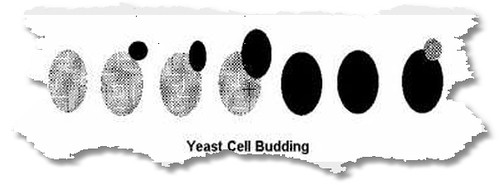Baking Theory Notes: Fermentation Chemistry
. alcohol, BAKING, baking chemistry, baking ingredients, Baking Theory, Bread, citrus, dough, fermentation, flours, lime, Sugar, with grains, yeastFermentation
Remember: Fermentation starts when the mixer stops!
Control Fermentation through:
- Temperature
- Time
- Gas is produced --> Carbon Dioxide {When Dough is mixed gas is caught by the gluten and the gas rises}
- (water & flour cause enzyme activation)
- Gluten is modified --> Dough becomes balanced so dough is workable : Elasticity --> Extendability
- Flavor is developed (Acidity)
- Alcohol is developed ("Alcoholic fermentation")
Enzymes:

click here to see a bigger sized diagram of the chemical changes of fermentation.
Definition:
Biochemical Catylist: an organic substance formed by living cells (yeast), is able to cause changes in other substances {i.e bacteria, fungus or both } without changing it's self .
Diastatic = has enzymes
Non-diastatic = enzymes have been killed
Diastic Enzymes:
---> Supplied by flour / or Malt (sugar)
- Alpha-Amalase works on Amylose ---> Converted to Dextrin (sugar)
- Beta-Amalase works on Amylopectin ---> Converted to Maltose (sugar)
---> Wheat is 70% starch (bran is protein)
Starch:
--->Amylose --->
--->Amylopectin--->
Diastatic Enzymes from flour (from milling) work on the damaged starch (i.e gelatinized (from heat / baking) and convert it to sugar (2% of starches) .
End result is mostly Maltose. Yeast cannot metabolize maltose.
- Maltase (enzyme) ---> converts to Fructose, Dextrose / Glucose)
- Sucrose [beet or cane] (granulated sugar) ---> Converts into Glucose
- Invertase (enzyme from yeast) ---> converts Glucose into Sucrose
Yeast takes maltose (enzyme) and converts it into Fructose, Dextrose / Glucose {allows yeast to eat it).
These processes take place if:
- Optimal Temperature
- Right moisture Content
- Allowed Optimal time
Simple Sugars:
- Fructose = CO2
- Glucose = CO2
- Dextrose = CO2
- All from flour
- Can be found with Diastatic Enzymes
*Over mixing dough will break dough down into "slime". I've seen this happen, it ain't pretty. Kinda resembles the stay puff marshmallow man (as the ghostbusters cross streams)
when he is obliterated --- a bumpy, jiggly white mass. yuck.


















